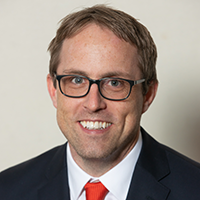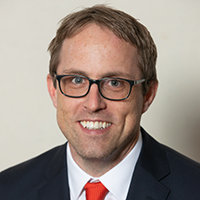
How One Top-Performing Bank Explains Its Remarkable Success
 The closer you look at U.S. Bancorp’s performance over the past decade, the more you’re left wondering how the nation’s fifth biggest commercial bank by assets has achieved its remarkable success.
The closer you look at U.S. Bancorp’s performance over the past decade, the more you’re left wondering how the nation’s fifth biggest commercial bank by assets has achieved its remarkable success.
Here are some highlights:
- It was the most profitable bank on the KBW Bank Index for seven consecutive years after the financial crisis.
- It emerged from the crisis with the highest debt rating among major banks.
- Its employee engagement scores are consistently at the top of the industry.
- It has been named one of the most ethical companies in the world for four consecutive years by the Ethisphere Institute.
How has the $461 billion bank based in Minneapolis, Minnesota, accomplished all this?
If you ask Kate Quinn, the bank’s vice chairman and chief administrative officer, the answer lies in its culture.
“There’s a reason that sayings like ‘culture eats strategy for lunch’ are stitched into pillows,” says Quinn.
Quinn doesn’t talk about U.S. Bancorp’s culture from a distance; since joining the bank in 2013 to oversee its rebranding campaign, she has led the charge on articulating and capturing the bank’s culture in a series of value and purpose statements.
“When I was starting to do the work of building the brand, I looked into the history of the company, its genealogy, to figure out our core attributes—the attributes our customers and employees associate with us,” says Quinn. “What I found was this unique thing about us. Any company can say ‘we bring our minds to our customers,’ but there aren’t many companies that can credibly say ‘we bring our hearts to our customers,’ and we can say that. It is real.”
Given that executives at all companies will tell you the same thing, the challenge is to differentiate between companies that pay lip service to these ideals and those that genuinely embrace them.
“The real insight you get about a banker is how they bank,” Warren Buffett has said in the past. “Their speeches don’t make any difference. It’s what they do and what they don’t do [that defines their greatness].”
One way to gauge what a bank does and doesn’t do is to look at its financial performance over an extended period of time. It’s an imperfect proxy, admittedly, but a revealing one nonetheless, as businesses built on unethical or immoral foundations simply aren’t sustainable. At one point or another, the chickens always come home to roost—just ask Wells Fargo & Co.
This is why U.S. Bancorp’s performance, since its current leadership took control of Cincinnati-based Star Banc in 1993, is so significant. It didn’t commit mishaps that caused it to fall prey to a larger competitor in the consolidation cycle of the 1990s. A decade later, it sidestepped the accounting scandals surrounding Enron, WorldCom, Tyco and others that tarnished the images of so many bigger banks. And it steered clear of the worst excesses in the mortgage and securities markets in the lead-up to the financial crisis.
Anyone who knows U.S. Bancorp’s former chairman and CEO Richard Davis will tell you that he embodied principled leadership, adopting an approach that wasn’t only ethical and rational, but also one that embraced balance. He never sent emails to his employees at night, for instance, because he didn’t want to interfere with their home lives. He was also known to call his employees’ parents on their birthdays.
When it came to bottling U.S. Bancorp’s culture, then, one of Quinn’s objectives was to capture Davis’ approach.
“As I was getting my head around what do we do and what are we trying to do, I realized that it isn’t about the products and services,” says Quinn. “When you think about what a bank does—and this came from Richard—it’s really about powering human potential. I told him that I wanted to build his DNA into the company—the culture, the purpose, the core values. That is the part of Richard that has become the fabric of this company.”
But Davis’ influence is just one element of U.S. Bancorp’s broader culture. Other elements come from Davis’ predecessor and successor.
His predecessor, Jerry Grundhofer, was a tactical operator with few equals. He was the dean of efficiency, one of the valedictorians of banking throughout the 1990s.
“Jerry brought a set of values and capabilities to the company that was needed—scrappiness, cut to the chase, financial discipline,” says Quinn. “When Richard came in, he didn’t change that piece of it, he built on top of what Jerry did by adding the human dimension. Jerry had always put the shareholders first. Richard came in and put the employees at the top.”
The same is true of Davis’ successor, the bank’s current chairman and CEO, Andy Cecere, who adds another element into the mix. Cecere’s reputation is that of a practical innovator who’s pushing the bank to focus on change, innovation and technology. His favorite presentation slides, for example, compare the Old Western TV series Bonanza to the Jetsons.
Again, things like this are easy to dismiss as vacuous corporate-speak. But one lesson you learn after spending enough time with top-performing bank CEOs is that just because something sounds trite doesn’t mean it isn’t true.
Quinn understands that. It’s why she’s writing these cultural attributes into U.S. Bancorp’s DNA with revamped value and purpose statements. Facile notions of efficiency and operating leverage may excite analysts on quarterly conference calls, but the true source of U.S. Bancorp’s competitive advantage lies in its commitment to doing what’s right.



